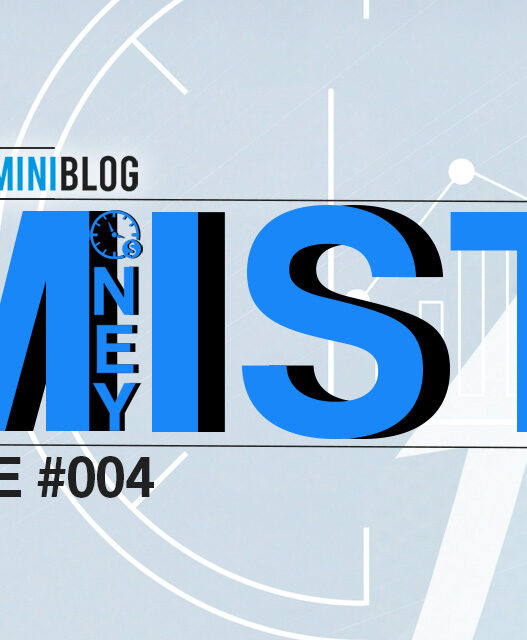Careers sneak up on us. Thirty years ago, no one's mom was saying, “Honey, I really hope you grow up to be a social media manager.” And yet here we are—scrolling, posting, scheduling, reporting, and somehow turning likes into livelihoods.
Being a social media manager is part art, part science, and part caffeine-fueled chaos. It's a career that didn't exist when flip phones were cool, but today it's a multi-billion-dollar industry where a well-timed meme can move markets.
If you're wondering whether this is the career path for you, you're in the right place. This isn't a fluff piece about “following your passion.” It's a comprehensive, practical guide on how to become a social media manager—what it takes, what it pays, and what you'll actually be doing all day.
The Case for Becoming a Social Media Manager
Let's be honest: businesses didn't hire people to post cat gifs twenty years ago. Today, they do. Why? Because social media is the new town square, billboard, TV commercial, and customer service desk all rolled into one.
For companies, having a skilled social media manager is the difference between being invisible online and building a loyal customer base. It's no longer optional—it's survival.
But unlike a marketing campaign you can “set and forget,” social media requires constant attention. Audiences get bored. Algorithms shift. Competitors copy your content. That's why this role exists, and why it's one of the fastest-growing careers in modern business.
The Roles and Responsibilities of a Social Media Manager
So, what exactly do you do if your business card says “social media manager”? Spoiler: it's not just scrolling TikTok and occasionally hitting “share.”
Core Responsibilities
- Strategy Development – Aligning posts with company goals: more sales, more sign-ups, more loyalty.
- Content Creation – Writing captions, designing graphics, editing video. Yes, you'll wear all the hats.
- Scheduling & Publishing – Using tools like Buffer, Hootsuite, or Later to plan campaigns.
- Community Management – Answering questions, calming down angry customers, responding with wit when the moment calls for it.
- Analytics & Reporting – Tracking engagement, reach, conversions, and ROI. You can't just say, “The vibe feels good.”
- Trendspotting – Knowing when to hop on a trending audio clip or when to avoid one that could sink your brand.
Extra (But Common) Duties
- Paid ad management
- Influencer partnerships
- Cross-department collaboration (sales, PR, customer service)
- Crisis management (because Twitter storms are real)
The unglamorous truth: being a social media manager is juggling. You're part writer, part therapist, part firefighter, and part data scientist.
How Much Does a Social Media Manager Earn?
Now we're talking numbers. Salaries vary widely depending on experience, location, and whether you're freelancing or in-house.
- Entry-Level (0–2 years): $40,000–$55,000 per year
- Mid-Level (3–5 years): $55,000–$75,000 per year
- Senior/Director-Level (6+ years): $80,000–$120,000+ per year
- Freelancers: $25–$75/hour depending on skillset and niche
According to the Bureau of Labor Statistics and LinkedIn data, the average salary for a U.S.-based social media manager in 2025 sits around $65,000. But top performers in competitive industries can easily clear six figures.
The secret? Metrics. Companies will pay more for someone who can prove they drove revenue—not just engagement.
How Many People Are Social Media Managers in the U.S.?
It's tricky to put a neat number on this, because the role overlaps with titles like “digital strategist” or “content marketer.” But estimates suggest well over 200,000 people in the U.S. are employed specifically as a social media manager.
That doesn't even count freelancers, part-timers, and entrepreneurs who manage accounts as part of their hustle. Translation: competition is stiff, but demand is high.
A Day in the Life of a Social Media Manager
Every social media manager's day is different—but here's a realistic sketch.
- Morning: Review analytics from yesterday's posts. Respond to urgent DMs or comments. Check trending hashtags or audios.
- Midday: Draft posts, create graphics or video clips, and schedule content across platforms. Coordinate with the design team or product managers.
- Afternoon: Community management—replying to comments, resharing user-generated content, diffusing a mini-crisis if needed.
- Evening (often): Monitor real-time engagement. Social doesn't clock out at 5 p.m., which means you sometimes don't either.
The unpredictable part? Viral moments. If your post suddenly takes off, your plans go out the window. And if a competitor missteps, you might spend the day drafting clever responses.
Career Progression for a Social Media Manager
What happens after your first job? Here's how the ladder usually looks:
- Social Media Coordinator/Assistant – Handles scheduling and basic posting.
- Social Media Manager – Owns strategy and execution for one or multiple accounts.
- Senior Social Media Manager – Oversees larger campaigns and often manages a team.
- Head of Social/Digital Director – Sets broader digital marketing strategies across channels.
- Chief Marketing Officer (CMO) – Yes, many CMOs today started in social.
The field evolves so fast that lateral moves are common too. A social media manager might pivot into PR, paid media, or influencer marketing after a few years.
What's Needed to Become a Social Media Manager?
Here's the beauty: you don't need an Ivy League MBA. But you do need skills, persistence, and maybe a tolerance for angry comment sections.
The Bare Minimum
- Strong writing and communication skills
- Familiarity with major platforms (Instagram, TikTok, LinkedIn, YouTube, X/Twitter)
- Basic design sense (Canva at a minimum, Adobe Creative Suite if you're ambitious)
The Middle Tier
- Analytics know-how (Google Analytics, native platform insights, social listening tools)
- Experience running small campaigns—your own personal account can count
- Understanding of brand voice and consistency
The High-End (to stand out)
- Certifications (Hootsuite, HubSpot, Meta Blueprint, Google Analytics)
- Advanced video editing skills (Premiere Pro, Final Cut)
- Data storytelling—translating raw numbers into strategic recommendations
- Team management and leadership skills
Unlike some careers, this isn't gatekept by degrees. Many successful managers built portfolios by growing their own accounts or freelancing for small businesses.
How to Determine if You Should Become a Social Media Manager
Ask yourself some blunt questions:
- Do you like being “always on”? Social media rarely sleeps.
- Can you handle criticism from strangers on the internet? Because it will happen.
- Do you enjoy both creative and analytical work? You'll bounce between brainstorming TikTok skits and crunching engagement rates.
- Can you adapt fast? Algorithms change like the weather.
If the thought of spending eight hours a day online makes you want to scream, this probably isn't for you. But if you're energized by creativity, trends, and data, you might thrive.
The Pros and Cons of Being a Social Media Manager
The Pros
- Creative freedom
- Remote-friendly work
- High demand across industries
- Potential for six-figure salaries with experience
The Cons
- Burnout is real (constant notifications, constant change)
- Unpredictable hours
- Pressure to “always perform” with content
- Harder to explain to your grandparents than being a doctor
Social Media Manager Success Stories
The Freelancer Turned Agency Owner
Taylor started freelancing on Upwork for $20/hour, managing Instagram accounts for small boutiques. Within three years, she built an agency managing accounts for 15 clients and now earns mid-six figures.
The Corporate Climber
Jordan began as a social media intern at a Fortune 500 company. Ten years later, he's the Head of Digital Marketing, leading a team of 30. His foundation? Scheduling tweets at 2 a.m. during product launches.
The Niche Specialist
Sophie focused exclusively on TikTok for fitness influencers. By becoming the go-to expert in her niche, she commands premium rates—charging $5,000/month per client.
Hacks and Tips for Breaking In
- Build Your Own Case Study: Grow a personal brand or side project account to showcase results.
- Stay Educated: Platforms evolve constantly. Invest in ongoing learning.
- Network Like Crazy: Many jobs come from referrals, not job boards.
- Pick a Niche: Standing out is easier when you're “the person for restaurants” or “the person for TikTok fashion.”
- Track Results: Always measure ROI. Engagement is great, but conversions get you promoted.
The Future of the Social Media Manager Role
AI is automating scheduling and even some content creation. But here's the catch: AI can't replace human creativity, empathy, or judgment. Brands will always need real people to interpret culture, spot nuance, and connect authentically.
As platforms expand into virtual reality and social commerce, the demand for skilled managers will only grow. This isn't a dying career—it's one that's evolving.
Final Words
Becoming a social media manager isn't about posting pretty pictures. It's about driving results, adapting to change, and learning to balance creativity with data. Done right, it's one of the most flexible, rewarding careers of our era.
The field is growing, the pay is competitive, and the barriers to entry are lower than most corporate jobs. But it requires resilience, creativity, and constant learning.
If you're someone who thrives on change and doesn't mind spending your workday swimming in memes, hashtags, and spreadsheets, then social media management might just be the career where you shine.
The post How to Become a Social Media Manager appeared first on MoneyMiniBlog.



















